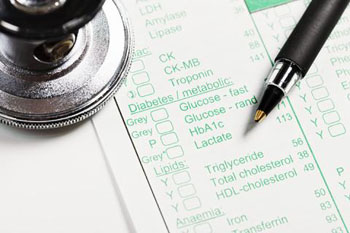Experts Call to Improve Health for Nations with Standard List of Essential Tests
By LabMedica International staff writers
Posted on 13 Jul 2016
Similar to the long-established Model List of Essential Medicines (EML) published by the World Health Organization (WHO), a parallel list of companion diagnostic tests has now been proposed to help improve capacity and quality of testing in developing nations.Posted on 13 Jul 2016
In developing nations many tests are unavailable or doctors may not put much faith in them because of the state of their country’s testing labs. Some tests, such as for emerging viruses like Zika or Ebola, could make the difference in outbreaks, which can also quickly affect the rest of the world.

Image: Experts have proposed the first Model List of Essential Diagnostics (EDL), a list of key companion diagnostic tests that every country should strive to have available, with high quality standards. The list would help guide the use of medicines on the WHO’s Model List of Essential Medicines (EML) (Photo courtesy of University of Michigan Health System).
In hopes of changing this situation towards better health globally, a team of experts has now put together a list of key tests that every country should strive to have available, with high quality standards. They provide a list of tests that syncs with WHO’s EML, which has guided spending to provide over 300 vital pharmaceuticals by government agencies, healthcare organizations, and charity groups worldwide. When a medicine makes it onto the list, it jumpstarts a global health funding mechanism to make get the medicines flowing to developing countries.
A parallel Model List of Essential Diagnostics (EDL) proposed in the new paper could help optimize that spending. When performed correctly, these tests can help health teams figure out which of the EML medications a patient needs and at what dose, track response to treatment, and monitor for medication toxicity.
“Efficient delivery of healthcare requires diagnostic testing,” said lead author Lee F. Schroeder, MD, PhD, assistant professor, University of Michigan Medical School, UM Health System (Ann Arbor, MI, USA), “You can’t treat what you can’t test. This list includes the most critical tests for diagnosing conditions, monitoring drug effects and toxicity, reducing over-prescription of antibiotics, and enabling surveillance of infectious threats.”
The team, including Timothy Amukele, MD, PhD, of Johns Hopkins University (Baltimore, MD, USA), compiled this first EDL by scouring expert databases on diagnostic testing to determine which tests are needed to support use of each medicine on the EML. The resulting list includes 147 essential laboratory tests in 57 categories. A single test can guide the use of many EML drugs.
The paper includes a table of 19 test categories that can guide the use of 10 or more EML medicines, including the following. Accurate counts of different types of blood cells in a sample, which can directly affect use of 136 EML items. Accurate blood tests assessing liver toxicity, which can support use of 104 EML drugs. Accurate blood tests for kidney function, which should be used in conjunction with over 80 EML items. Standardized use of microscope-based diagnostic tests, which can guide best use of 85 essential medicines, most aimed at treating and preventing infectious disease. Urinalysis, when performed well, can monitor the use of 64 EML drugs. Tests that detect DNA signatures from an infectious microbe, or that isolate and grow that microbe from a patient sample, can make a difference in outbreaks and in the use of 62 EMLs.
“Many developing countries have high quality central public health labs in large cities; the missing piece in global health is a network of smaller, but still high quality, labs throughout the country,” said Prof. Schroeder. Poor test quality, or inappropriate storage of testing materials, can erode doctors’ trust in results. In fact, a recent literature review by the WHO identified multiple studies reporting that 2-10% of HIV-diagnosed patients in the developing world may not have ever been infected by HIV. These misdiagnoses were based on inappropriate use of diagnostic testing.
In a recent study, Schroeder, Amukele, and colleagues at a hospital that Johns Hopkins runs jointly with Makerere University in Kampala, Uganda, evaluated diagnostic test availability in that city. While 822 labs offered malaria testing, only 5 offered testing essential to long-term management of diabetes and avoidance of complications such as blindness, amputation, and kidney failure.
While it will take time and resources to ensure that developing nations have high quality testing capability for even some of the essential diagnostics, Prof. Schroeder predicts that it will prove cost-effective in the long run. “The EML is probably the single most important tool in global health,” he said, “We believe a list of essential diagnostics is long overdue and could amplify the impact of current global health investment.” The team plans further research on the topic and hopes to encourage the global health community to embrace implementation of the idea.
The study, by Schroeder LF et al, was published June 30, 2016, in the New England Journal of Medicine.
Related Links:
University of Michigan Medical School, UM Health System














